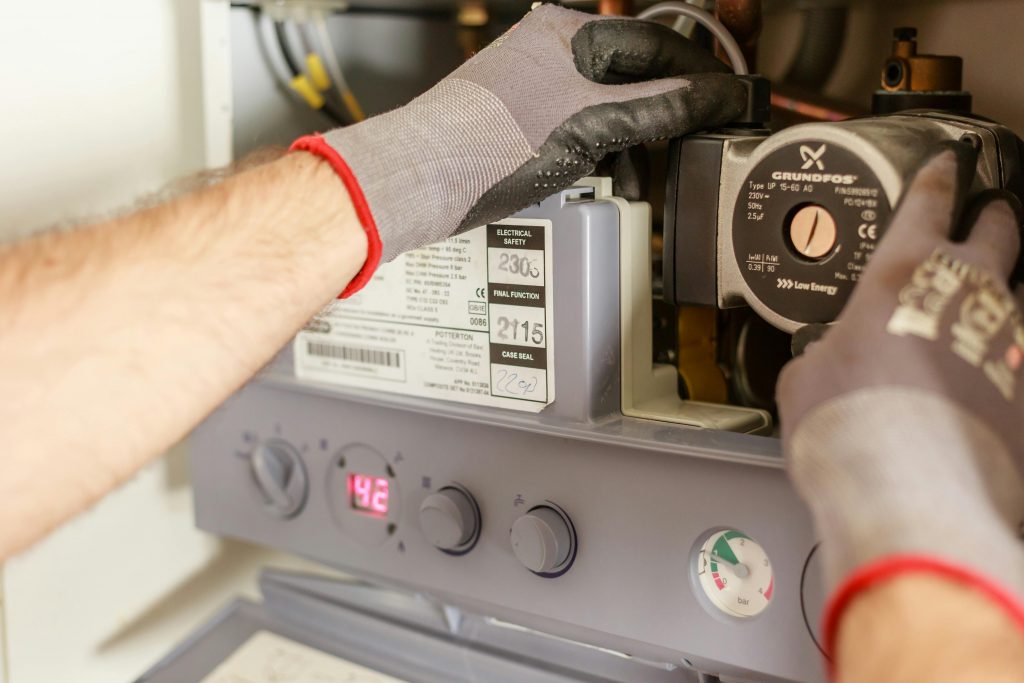As the UK becomes net-zero for carbon emissions, homeowners are seeking efficient and sustainable heating options. With gas boilers being phased out in new homes from 2025 and oil heating becoming subject to greater restrictions, the question is:
Is infrared heating capable of replacing a gas or oil boiler completely?
The short answer is yes, in many cases, but the effectiveness depends on factors like home insulation, electricity tariffs, and heating habits. In this blog, we’ll explore how infrared heating compares to gas and oil boilers and whether it’s a viable replacement for your home.
How Does Infrared Heating Work Compared to Boilers?
| Feature | Infrared Heating | Gas/Oil Boiler |
| Heating Method | Radiant heat (warms objects & people directly) | Convection (heats air and circulates it) |
| Efficiency | 100% energy-to-heat conversion | 85-90% (gas), 80-90% (oil) |
| Energy Source | Electricity (can be renewable) | Fossil fuels (gas/oil) |
| Running Costs | Depends on electricity tariff | Gas is currently cheaper, but prices are rising |
| Installation Cost | Higher upfront but no pipework needed | Lower for replacement but expensive for new installs |
| Maintenance | Low (no moving parts) | High (boiler servicing, pipe maintenance) |
| Carbon Emissions | Zero (when using renewable energy) | High (CO₂ emissions from fossil fuels) |
Can Infrared Heating Provide Whole-Home Heating?
Yes! Infrared heating can replace a boiler system if designed correctly. Here’s how:
✅ The NexGen system can be installed in every room, providing a whole-home heating solution.
✅ Zoned heating allows you to heat specific areas instead of the whole house, reducing energy waste.
✅ Well-insulated homes retain heat better, making infrared more effective.
✅ It works well with solar panels and battery storage, reducing dependency on the grid.
However, infrared heating works differently from central heating, so adjustments in heating habits may be required.
Key Benefits of Replacing a Gas/Oil Boiler with Infrared Heating
- Higher Energy Efficiency
Infrared heating converts almost 100% of electricity into heat, while gas and oil boilers lose energy through combustion and pipe heat loss.
- Lower Maintenance & Longer Lifespan
Boilers require annual servicing, pipe maintenance, and potential repairs.
Infrared panels have no moving parts, meaning minimal maintenance and a lifespan of 20+ years.
- Healthier Indoor Air Quality
Infrared heating doesn’t circulate air, preventing the spread of dust, allergens, and mould spores.
Traditional convection heating creates damp areas where mould can grow, but infrared keeps surfaces dry.
- Supports the Transition to Renewable Energy
Pairing infrared heating with solar panels and battery storage can create a low-cost, self-sufficient heating system.
Unlike gas and oil, which release CO₂, infrared heating can be powered by clean electricity.
- Space-Saving & Aesthetic Appeal
No need for radiators, pipes, or bulky boilers—infrared panels can be ceiling-mounted, wall-mounted, or even disguised as mirrors or artwork.
Challenges to Consider Before Switching
- Electricity Costs vs Gas Prices
Electricity is currently more expensive per kWh than gas, so choosing the right tariff is key.
Economy 7, Economy 10, or time-of-use tariffs can help lower running costs.
Running the heating from solar power.
Using the energy saved in batteries which has been charged on off-peak tariffs.
- Initial Investment
Infrared heating can cost more upfront, but no boiler, pipework, or maintenance costs mean long-term savings.
Retrofitting a home with infrared may require extra insulation to maximise efficiency.
Adding insulation is the cheapest way
- Different Heating Experience
Infrared heat is radiant, meaning it won’t warm the air like a traditional system. You will start to feel warm within a few minutes of the heating being turned on. The air is warmed once the surface temperatures start to rise.
Some users may need time to adjust to this different but effective heating method. Most people find this more comfortable as the is not stuff like normal central heating.
Is Infrared Heating a Viable Replacement for Gas & Oil Boilers?
- For new builds & well-insulated homes – Yes, it’s an excellent, energy-efficient solution.
- For homes with solar panels – Yes, it can be cost-effective and sustainable.
- For poorly insulated homes – We advise that the insulation is improved first.
- For large, open-plan spaces – May require multiple panels and strategic placement for effective heating.
Final Verdict: Should You Switch to Infrared Heating?
✔️ Infrared heating CAN replace gas or oil boilers when properly designed. It offers:
✔️ High efficiency & cost savings over time
✔️ A healthier, low-maintenance solution
✔️ A sustainable heating option for net-zero homes
However, insulation, panel placement, and electricity tariffs are crucial factors for success. If you’re considering switching, consulting a heating expert can help determine the best setup for your home.


